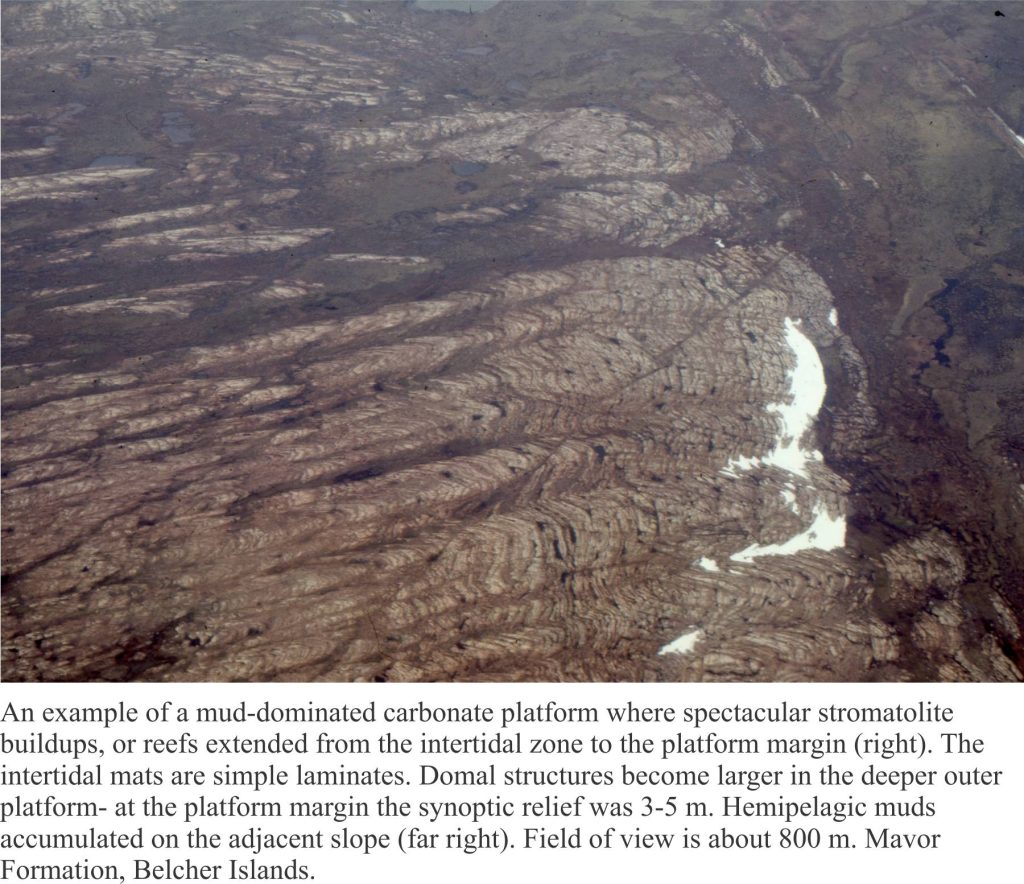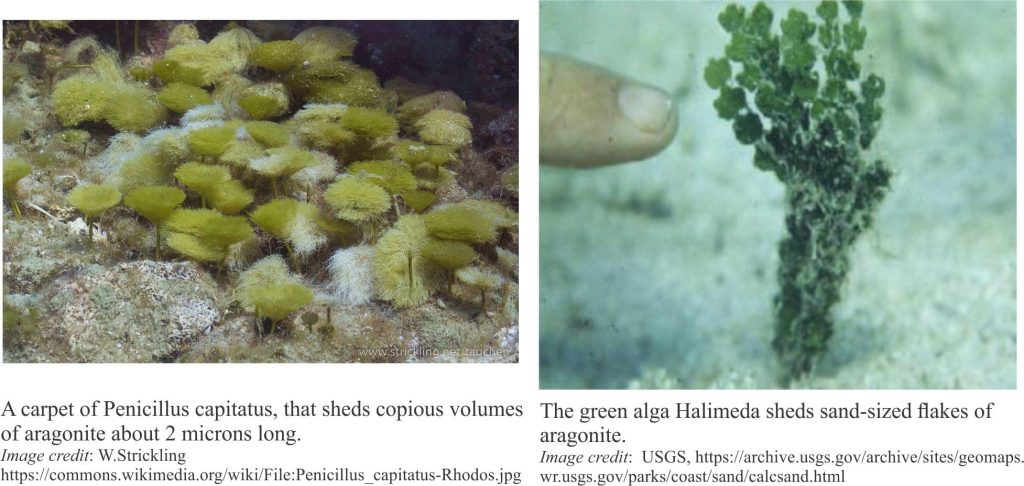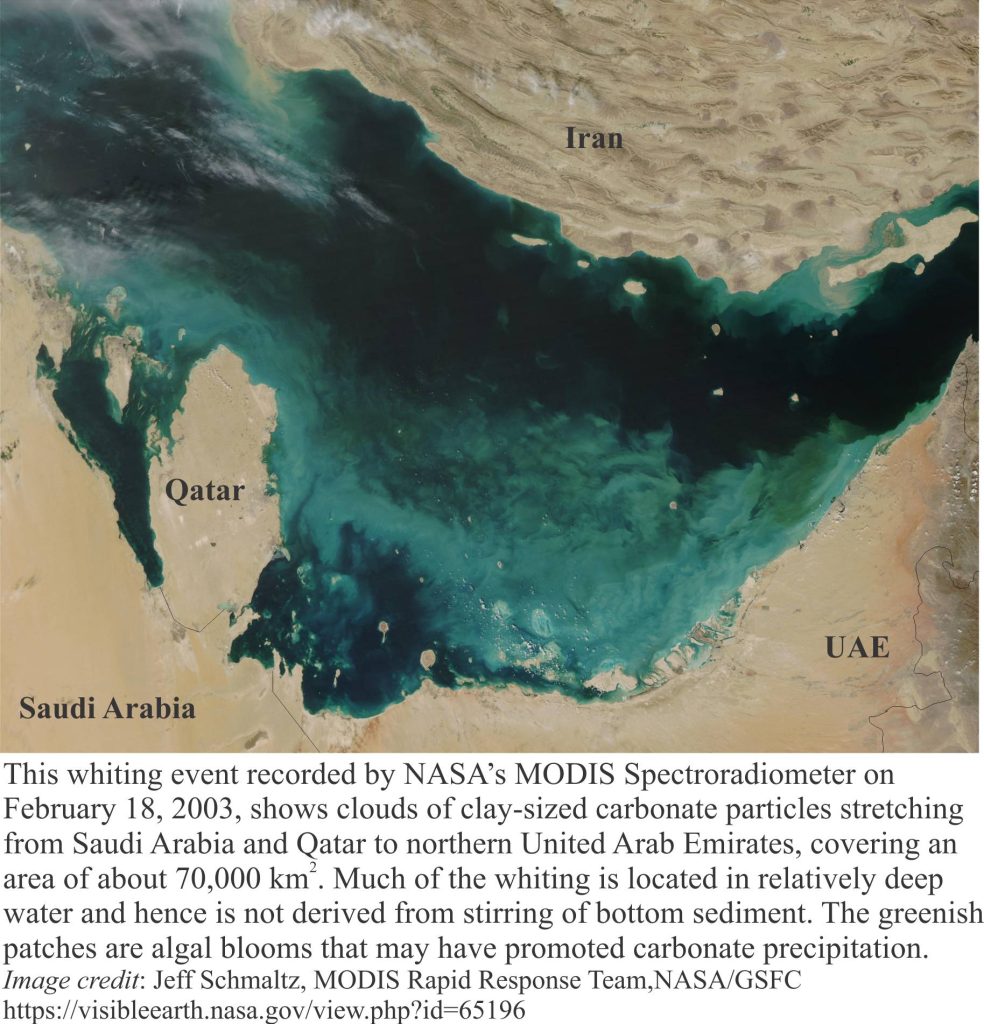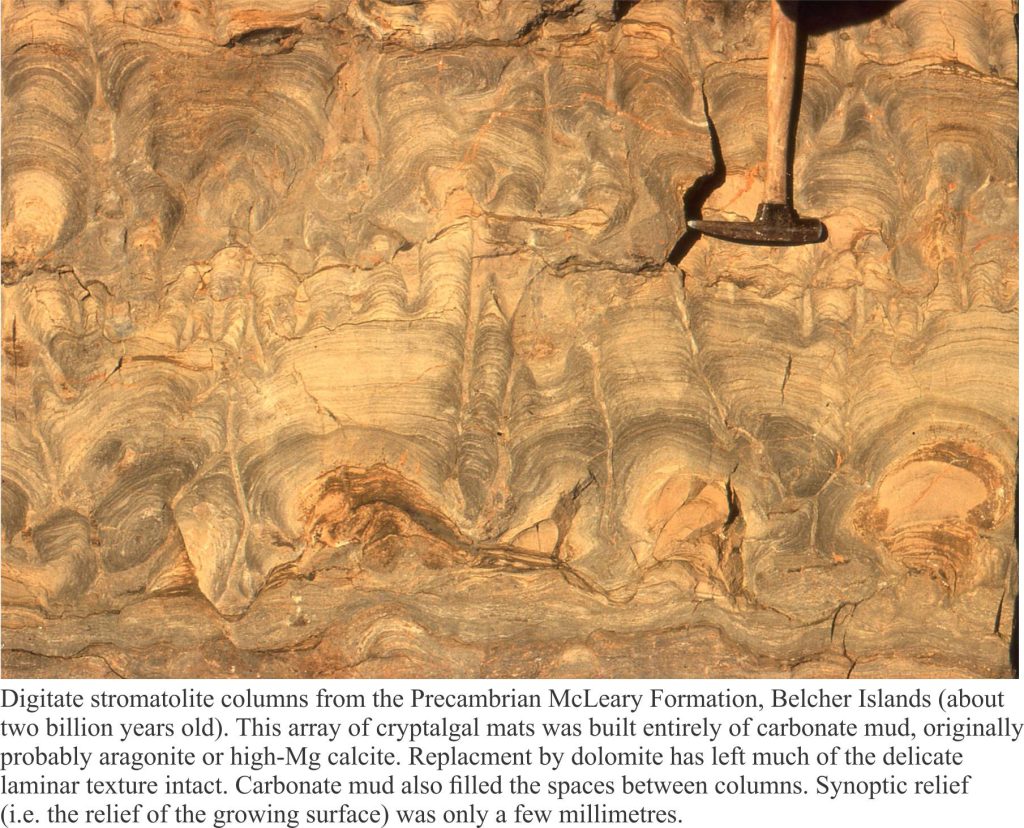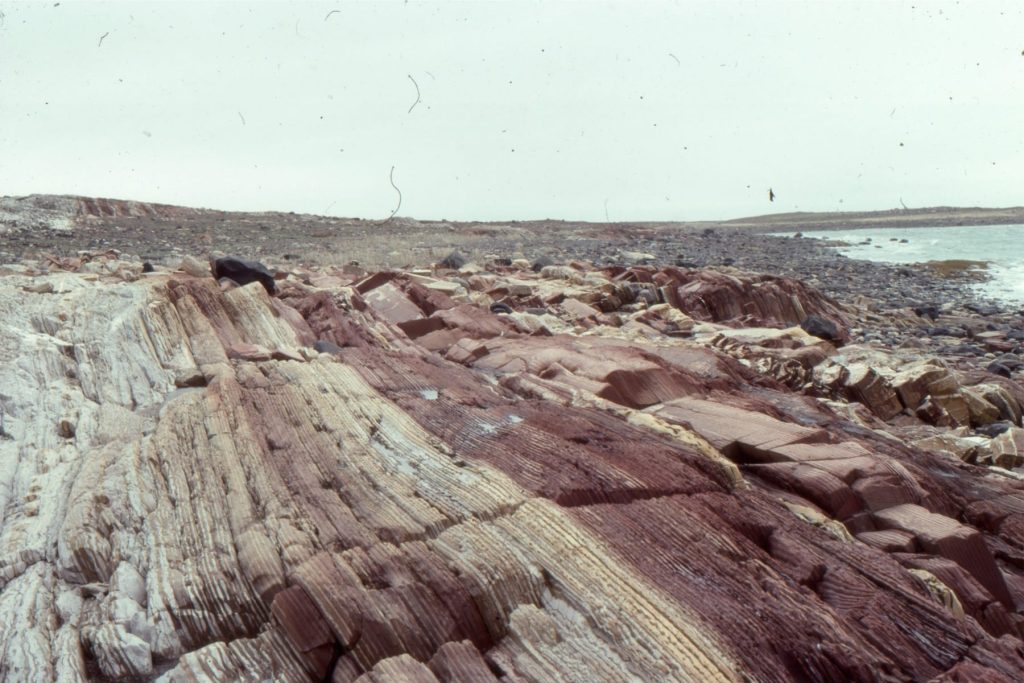A post in the How to… series on carbonate mineralogy – carbonate mud
Micrite – a sensible contraction of microcrystalline calcite
Lime muds are important components of most shallow carbonate-forming environments: platforms, platform margins and slopes, back-reef and fore-reef settings, and lagoons. They also accumulate in shallow alkaline lakes and as oozes on the deep ocean floor. Like their terrigenous cousins, they accumulate as discrete beds and as matrix to coarse-grained carbonate frameworks.
Lime mud, or micrite includes aragonite and calcite (and perhaps dolomite) having crystal dimensions less than 4-5 microns. Thus, any detailed study requires an SEM or similar technology. Their grain size, and hence high unit-volume surface area means they are quite reactive and prone to recrystallization to coarser calcite-dolomite spar mosaics.
Today, the largest volumes of carbonate mud are produced in shallow warm seas at depths usually less than 10 m. All carbonate mud is produced by precipitation, either directly (i.e without biological intervention), or as a by-product of biological activity. Although there is a degree of certainty about this, the relative contribution of each source remains contentious, even after decades of study. Volumetrically less significant but perhaps no less important sources of mud include bioerosion and mechanical breakdown of skeletal material.
Several species of green algae produce micron-sized aragonite needles and plates that are shed when the alga dies. Of these, the codiacean algae Halimeda and Penicillus are the most prolific producers. For example, in Florida Bay and reef measurements of Penicillus’ aragonite productivity (as needles 2-3µm long) indicate that this species alone can account for all the mud deposited there (Stockman et al. 1967). Other codiacean species plus breakdown of skeletal material also contribute mud, but at this location Penicillus is it. The aragonite produced in these shallow waters is also transported to tidal flats and farther offshore.
Across the ditch, Grand Bahama Bank also hosts swaths of aragonitic mud. Calculations like those penned for Florida, demonstrate that most of this mud (on a volumetric basis) could also have come from codiacean algae. However, this is disputed by Milliman and others who contend that a large proportion of the micron-sized aragonite (up to 75%) precipitated directly from sea water because:
- The aragonite crystal morphology is more like that produced by direct precipitation, and
- The strontium content of the mud is too high – Sr/Mg ratio ≈ 4 compared to average values of ≈ 2 for codiacean algae.
One phenomenon that has aroused interest as a potential source of aragonite mud is the spontaneous development of milky white clouds of suspended carbonate, or whitings. They form over shallow platforms and persist only as long as it takes for the suspension to disperse or fall out of suspension. Two mechanisms are frequently invoked as explanations:
- Where bottom muds are stirred up by feeding fish (this has been observed), and
- By direct precipitation from seawater. Measurement of whitings over Grand Bahama Bank show that most of the suspension is micron-sized aragonite, but up to 20% high Mg-calcite may be present (Shinn et al 1989).
Some support for the direct precipitation hypothesis is linked to examples of whitings in areas devoid of bottom-dwelling red and green algae (e.g. Trucial Coast). However, this does not preclude the possibility that suspended algae may play a role. J.W. Morse has suggested that en mass precipitation of aragonite in normal seawater can occur if phytoplankton photosynthesis (during algal blooms) reduces dissolved CO2.
The Bahamian aragonite is also transported to tidal flats and shallow lagoon, and to the platform margin where it accumulates from suspension on the adjacent deep water slope; carbonate mud that accumulates in this way is called hemipelagic mud.
During the Late Paleozoic, the calcareous algae niche was occupied by phylloid algae that were responsible for building mud mounds. Classic examples are found in Pennsylvanian cyclothems of Kansas and Oklahoma. Here they form part of the regressive limestone facies, where bladed and leaf-like phylloids acted as structural frameworks for the buildups. The facies has been well summarized by Phil Heckel (and lots of references therein).
Precambrian carbonate mudrocks (mostly dolomitized) are invariably associated with stromatolites of all shapes and sizes, from simple laminar mats to complex buildup reef-like structures like the example shown at the top of the post . It is generally understood that their construction was promoted by prokaryotic cyanobacteria (Phanerozoic red and green algae are all eukaryotes). Sedimentological evidence indicates that, like their Phanerozoic counterparts, they too inhabited shallow marine shelf, platform and inter-supratidal environments (here’s a link to the Stromatolite Atlas).
However, carbonate mud was deposited on the outer edges of platforms and adjacent slopes. An example from Belcher Islands (Costello Formation) consists of thin bedded dololutites and calcilututes, with the odd calci-turbidite, but no evidence of cryptalgal laminates. These deposits are also thought to have accumulated from mud suspended in the water column (i.e. hemipelagic) that originated in the carbonate mud ‘factory’ on the shallow platform.
Deep sea oozes are composed primarily of coccoliths and planktonic foraminifera that live in uppermost ocean waters (in the photic zone), and when dead gradually sink to the sea floor. Oozes accumulate in oceanic regions that are devoid of terrigenous sediment.
links to other posts in this series
Mineralogy of carbonates; skeletal grains
Mineralogy of carbonates; non-skeletal grains
Mineralogy of carbonates; classification
Mineralogy of carbonates; carbonate factories
